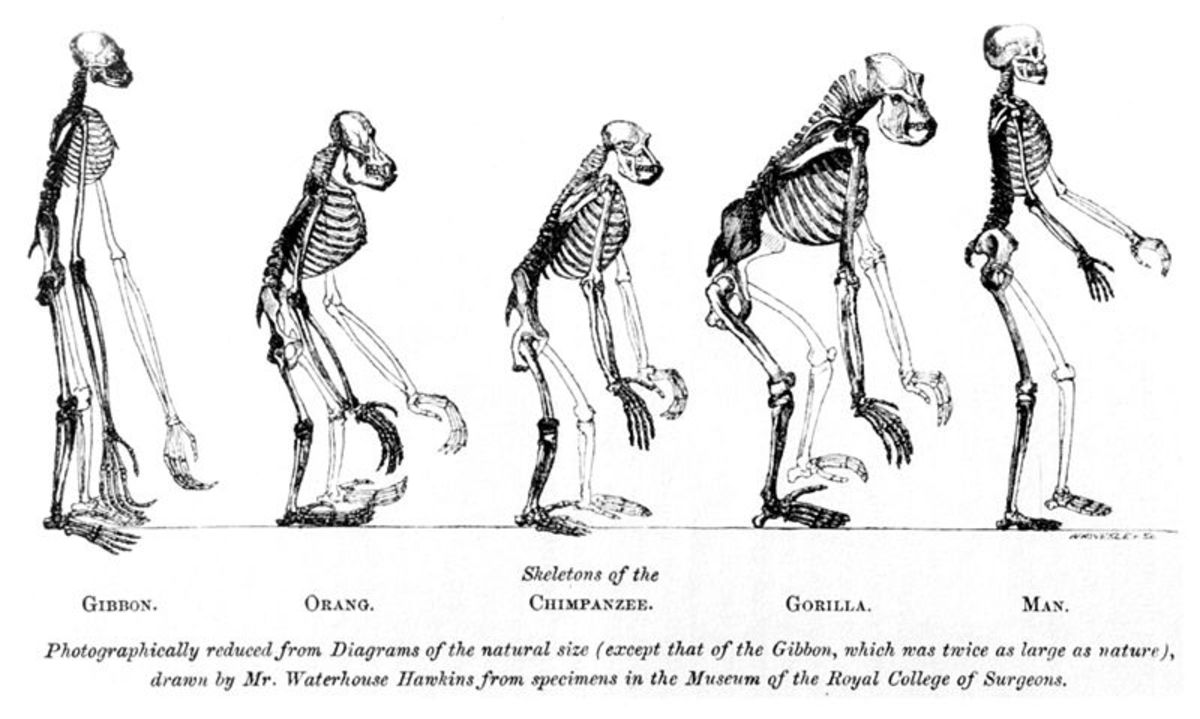Is Love a Mechanism of Evolution
Abstract
The phenomenon of love is an area left much unexplored in modern psychological science, even though it is considered the central concern in most cultures, little is understood as to its origins and purpose. According to Evolutionists, love can be understood as a mechanism of evolution, a chemical process driven by selective pressures, while culture and free will play a secondary role in influencing human pair-bonding. However, evidence supporting the claim that biochemical factors are the chief components of intimate love is insufficient in proving that love is a mechanism of evolution and undermines the significant role of culture and free will in pair bonding. The feelings of love are the result of physiology and evolution, as shown in the chemistry of attraction of attachment. However, the acts of choosing a partner, assigning meaning to a special partner, making a commitment, and remaining faithful contradict the determinism found in an evolutionary explanation. Therefore, love is not a mechanism of evolution; it is a biological, social, relational and psychological experience that can not be solely explained by chemical reactions and evolutionary theories.
Body:
Love is a universal experience that is responsible for connecting human beings and creating meaningful unions. Studies in neuroscience and biology show that certain biochemical components are associated with the feelings of love. Evolutionary psychologists try to find patterns in the attachment and decay of human relationships to explain the origins of love. Anthropologist Helen Fisher believes that serial monogamy is the primary sexual strategy of human beings after researching divorce statistics. Her findings convince her that love is a mechanism of evolution. Opponents of her proposal argue that love is more than biological. It involves social, psychological and relational factors. Also, an evolutionary explanation of love determines that free will is not possible in human relationships because natural forces alone guide human behavior. Even though Fisher points out that free will and culture may influence pair bonding, other scientists contend that evolutionary forces undermine these influences and ultimately render love meaningless. According to Allott, "... ... the distinction between what is genetic and what is cultural is one which it is not easy to make. Insofar as humans thrive, indeed can only exist, in groups, and "culture" is a group-related concept, and insofar as the fortunes of the group and the behavior of members of the group have directly genetic consequences, the tangle cannot be straightened out." (Allot Robin., 1998) An evolutionary explanation of love is not convincing for it dose not provide sufficient evidence and Fisher's account is often times biased against other plausible explanations that focus on culture and individual decision.
Anthropologists such as Helen Fisher argue that the phenomenon of serial monogamy is supported by world wide divorce statistics. On the other hand, Jerry S. Reber and Marissa S. Beyers argue that no sufficient evidence suggests that serial monogamy is the primary sexual strategy of human beings. (Francoeur & Taverner, 2000) Fisher believes that serial monogamy is "an ancestral cyclic breeding system" (Francoeur & Taverner, 2000) which helps the human species survive. She proposes that physiologically based emotions give rise to the human tendency to remain in a long term relationship for a period of about four years in order to raise a child. Such a relationship is then followed by a general pattern of decay. For example, Fisher believes divorces peak during and around four years after marriage and divorce risk is greatest at the height of reproductive and parenting years. (Francoeur & Taverner, 2000) However, evidence indicates that detachment, an important stage of serial monogamy, is not universal.
According to an article entitled "Is Serial Monogamy Worth Pursuing?" written by Ben-Zeév
in Psychology Today, "here is empirical evidence indicating that monogamy has been prevalent only among a minority of human societies (less than 20%) and an even smaller minority among mammals (about 3%)."
On the basis of a comprehensive study, David Barash and Judith Lipton conclude that there is no evidence that monogamy is somehow "natural" or "normal" for humans; on the contrary, there is abundant evidence that people have long been prone to having multiple sexual partners." (Ben-Zeév Aaron., 2008) Further more, according to an article by Meredith F. Small, an anthropologist at Cornell University, " Anthropologist Sarah Blaffer Hrdy of the University of California, Davis, maintains that this pair-bonded scenario is old-fashioned and probably biased by what Western culture thinks is "right." (Small Meredith. , 2009) Fisher conveniently ignores the fact that universal divorce rate is low and the incident of serial monogamy only applies to a minority of population. In conclusion, bonding statistics do not point to serial monogamy as the primary sexual strategy. (Francoeur & Taverner, 2000) Evidence support Reber and Beyers' argument that love is not a mechanism of evolution and that Fisher's claim is flawed due to a lack of believable evidence.
Feelings of physical attraction, arousal, affection, attachment relating to love are produced by biochemical components. However, cultural forces and free will are ultimately responsible for individual choices in bonding and separation, not evolution. Emotions associated with love are not the reasons humans become attached to one another and decide to then reproduce. They are simply by-products of human relationships which are based on free will and meaning. Helen Fisher uses biochemistry in her explanation of romantic love. She claims that chemicals include testosterone, estrogen, dopamine, norepinephrine, serotonin, oxytocin, and vasopressin are responsible for feelings of love when one enters a romantic relationship. Dopamine, Norepinephrine, and Seretonin are more commonly found during the attraction phase of a relationship. Oxytocin, and Vasopressin are detected in the attachment phase characterized by peaceful feelings and a heightened production of the endorphins. (Francoeur & Taverner, 2000) For example, "... ...oxytocin dampens the stress response of the sympathetic nervous system and the hypothalamus-pituitary-adrenal axis - besides having functional benefits, this is another pathway for rewarding, and thus encouraging, bonding behaviors." (Hanson Rick., 2010) Helen Fisher believes that human emotions related to love are generated by various biochemical processes heavily influenced by evolution. Humans have no control over how they feel when they enter a romantic relationship or terminate one. These emotions evolved over thousands of years, according the Fisher, all to direct serial monogamy, which she believes helps ensure human survival. (Francoeur & Taverner, 2000) She does not insist that evolution has any practical or proven effects on individual decisions in choosing a mate or resolving a problem. However, she believes that evolution ultimately directs fundamental human behavior, that human beings are driven to bond with others not because of their own will, but predetermined forces evolved over time due to natural selection.
Other physical factors such as MHC molecules in human scent are also considered by scientists in explaining attraction. Researchers suggest that these physical characteristics may increase the genetic variability of the human species and ensure its survival. According to Christine Garver-Apgar of the University of New Mexico, "... ...adding that variety in the MHC genes likely strengthens the immune system... ... You may ensure that your children have an immunological advantage. So they may be buffered [against] a wider variety of pathogens and toxins. And in an ancestral environment this would have been very, very important." (Kloza Brad. , 2007) Jerry S. Reber and Marissa S. Beyers argue that while love certainly has a biochemical basis, as shown in the activity of the brain and other physical signs of arousal and attraction, biology does not produce, nor determine love. (Francoeur & Taverner, 2000) For instance, when taken out of context, one's racing heart could mean many different things in different situations. It is only when one creates a connection with another person and willingly accepts that connection, does that physical activity have any applicable meaning. (Francoeur & Taverner, 2000) Relationships directed by humans determine the meaning of love. Without this acknowledgement of love, a racing heart would mean nothing. Love is not a product of biology, nor is it a phenomenon guided by evolutionary forces. A racing heart is not meaningful because it leads to human bonding and reproduction; it is only meaningful if a special bond is already created.
Humans do not love because mating leads to offspring. Humans love because of cultural forces and free will. However, Fisher is most likely correct in stating that the emotions of romantic love have a biological basis and human beings have no control over how they feel when they fall in or out of love. Jerry S. Reber and Marissa S. Beyers provide a more convincing argument against Fisher's claim that love is a mechanism of evolution. They point out that serial monogamy is not the primary sexual strategy of humans and does not support Fisher's argument that evolution is the driving force behind romantic relationships. Furthermore, Reber and Beyers objectively assess Fisher's statistical evidence of general decay patterns and determine that her interpretation is false and her argument is biased. They explain that a biological explanation of love fails to take into account important cultural influences and rejects the power of free will. A biological explanation reduces love to a meaningless tool of natural selection, reduces culture to a mere facilitator, an insignificant by-product of a purely biological process.
References
Allot Robin., Initials. (1998). Evolutionary aspects of love and empathy. Journal of Social and Evolutionary Systems, 15(4), 353-370.
Ben-Zeév Aaron., Initials. (2008, October 08). Is Serial monogamy worth pursuing?. Retrieved from http://www.psychologytoday.com/blog/in-the-name-love/200810/is-serial-monogamy-worth-pursuing
Francoeur, Robert T., and William J. Taverner. Taking sides. Clashing views on controversial issues in human sexuality. Guilford, Conn.: Dushkin/McGraw-Hill, 2000. Print.
Hanson Rick., Initials. (2010, February 15). The Evolution of love. Retrieved from
http://www.psychologytoday.com/blog/your-wise-brain/201002/the-evolution-love
Kloza Brad. , . (2007, February 13). Romantic genes . Retrieved from
http://www.sciencentral.com/articles/view.php3?type=article&article_id=218392895
Small Meredith. , F. (2009, February 13). The Romantic evolution of true love. Retrieved from
http://www.livescience.com/culture/090213-hn-pair-bonding.html








